Camping at Fraser Island, Australia
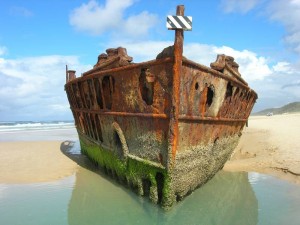 Welcome To Paradise
Welcome To Paradise
Midway up Australia’s Pacific Coast, Fraser Island offers a landscape you won’t see anywhere else in the world –majestic rainforests rooted in sand dunes, crystal clear lakes surrounded by snowy white sand, and seventy-five miles of uninterrupted ocean beaches flanked by dunes and brilliantly colored sand cliffs. A piney-eucalyptus fragrance blankets Fraser Island, the largest sand island in the world. The National Park’s unique array of habitats and geology-in-motion have earned it World Heritage listing. But the island isn’t a hands-off sanctuary; you can get sand between your toes as you explore the island, making Fraser Island a perfect camping destination.
Fraser Island Campsite
Fraser Island hosts my life-long favorite campsite. Midway down a seventy-five mile beach on the Pacific Ocean side, my family set up camp on a sandy rise behind the dunes. Long stretches of fore dunes are open for camping. We camped under “Dr. Seuss-looking” Pandanus trees with a shady view of the endless beach and a warm tropical breeze that I can still conjure in my mind. From this campsite, we explored dunes, hiked rainforests, and floated down clear creeks. The campsite was basic with a fire ring and a plein-air outhouse back in the bush. Several developed campgrounds are spread inland and down the beach that offer showers, drinking water, cooking facilities and toilets, but we chose to be on our own for a few days. Even though it was school vacation week in Australia, we had no neighbors within a half mile.
Explore Fraser Island By 4WD
Traveling around Fraser Island is only for the macho. The sandy roads are old one-lane logging roads that twist and turn–a 4WD is a must in the soft sand, the bigger the better. The main beach serves as a major roadway in all but high tide. An 80 km/h (50 mph) speed limit is strictly enforced with speeding tickets.
Central Station
From our campsite on the beach, we piled into our rented 4WD and explored inland. Our first stop was Central Station, an old logging camp. A rudimentary museum gives a window into the logging and sand mining that dominated the island in the last century. Huge primitive Kauri and Hoop Pines and later Satinay and Black Butt trees were taken out of these forests. Recreated Aboriginal shelters and ceremonial structures lie off the path in a quiet area of the station.
The boardwalk at Central Station leads through a prehistoric landscape. Crystal clear Wanggoolba Creek wanders about a cool shady valley filled with enormous ferns, airy piccabeen palms, and tall rainforest trees dripping with vines. The creek is so clear it looks like a ribbon of white sand flowing through the lush forest. You have to look hard to see the water.
Swimming At Lake McKenzie
Near Central Station is Lake McKenzie, one of Fraser’s many perched lakes. These lakes hold pristine rainwater over impenetrable layers of reeds and humus built up over centuries. Nutrients have been leached out of the sand, leaving vibrant white sand shorelines. These crystal clear lakes are tropical blue, warm, and inviting. After two hours swimming and lounging in the white sand, we had a hard time leaving.
Great Rainforest Walk
While on the shore, we talked with a family hiking the Great Rainforest Walk. This trail winds 50 miles through the island and takes about a week to complete. It is broken into day long segments so you can walk only a day or two if your time is short. The track brings you into some of the deepest rainforest, areas inaccessible by car. Hiker-only campsites are provided along the way.
Fraser Island Dingos
After we left Lake McKenzie, we headed back to our campsite. After all that bouncing over the roads, we were all happy to hit the beach. In the gathering dusk, far from any regular dwellings or people, we came across a ginger-colored dingo out to check the beach for any fish that may have washed in. Dingoes, the signature animal of Fraser Island, are lean relatives of the gray wolf. He kept his distance from us, but was not overly wary.
The Main Beach and Sand Dunes
The next day we explored the main beach. This sandy island gets copious amounts of rain (mostly at night), swelling creeks which emerge as small runnels across the beach. We stopped at Eli Creek, halfway down the island. A boardwalk brings you inland and offers a gentle jumping-off spot to drift down to the ocean.
Driving the beach offers a view of the rainbow cliffs, multi-colored layers of sand eroded and exposed by the wind. Seemingly endless sand blows are accessed from the beach as well. These huge dynamic dune systems cover hundreds of acres. We hiked through and played at Rainbow Gorge and Lake Wabby, enjoying the vista over the dunes to the blue Pacific. My teen-aged children frolicked, dove, and leaped around this giant sandbox.
Beached Ship Wreck
One of the major attractions of Fraser’s beach is the wreck of the Maheno, a luxury passenger liner washed up on the beach since 1935. On its way to Japan for scrap metal when a storm blew up, the Maheno’s tow line snapped in the fierce winds. The hulk still sits rusted and imposing on the shore. Further down the beach, are found the Champagne Pools. Set in rocks, these depressions are natural fish traps that are now used for swimming, with the surf replenishing the bubbles every few seconds.
Bird Watching
There are over 325 species of birds found on Fraser Island including brahminy kites, azure kingfishers, pied oyster catchers, red-capped plovers, white-bellied sea-eagles, yellow-tailed black-cockatoos and king-parrots. A pair of binoculars can keep you occupied for hours.
After a few days camping at Fraser Island on the beach, the sand had crept into every nook and cranny of our bodies. We reluctantly left our campsite and treated ourselves to two nights at the Kingfisher Bay Resort on the leeward side of the Island. Here there are four swimming pools, magnificent buffets of fresh tropical and Asian foods, eco-tours to fill days or just an hour, and just-right hikes from the resort itself.
If you have camping equipment in Australia, don’t miss camping at Fraser Island. You can take the ferry for just a day trip, but do yourself a favor and stay for a few days.
Author: Gro Flatebo
Edited By: CampTrip.com

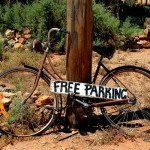
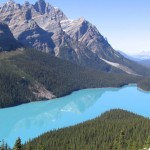
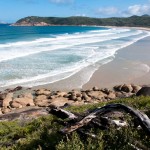
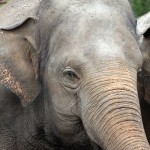
Discussion
No responses to "Camping at Fraser Island, Australia"
There are no comments yet, add one below.
Leave a Comment